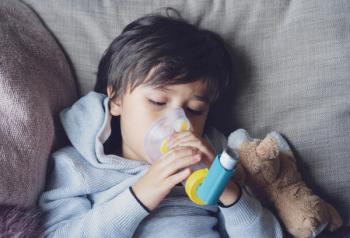
Hair Loss Due to Cancer Treatment
Approximately 65% of individuals undergoing chemotherapy will experience chemotherapy-induced hair loss, which is usually temporary and completely reversible when therapy ends.
It is estimated that more than 1.5 million new cases of cancer will be diagnosed in the United States this year, with nearly 600,000 individuals dying from the disease.1 The most common cancers expected to be diagnosed in 2015 include breast cancer, lung cancer, prostate cancer, and colorectal cancer.1 These cancers require different forms of treatment, which often depend on the stage and type of cancer in addition to several other patientspecific factors. Cancer therapy can have adverse effects (AEs), often due to effects on healthy tissues and organs. Weight loss, vomiting, infection, nausea, and hair loss are ranked as the most feared AEs associated with cancer treatment.2
Approximately 65% of individuals undergoing chemotherapy will experience chemotherapy-induced hair loss, which is usually temporary and completely reversible when therapy ends.3 The use of molecularly targeted agents in cancer treatment has also been associated with hair loss rates as high as 60%. Chemotherapy-induced hair loss has been shown to lower patient self-esteem and deprive patients of their privacy because the public commonly associates hair loss with cancer. Forty-seven percent of female cancer patients consider hair loss to be the most traumatic aspect of chemotherapy, with 8% of them stating they would decline treatment for fear of hair loss.4,5
Hair loss associated with cancer treatment is related to the selected anticancer agent(s) and the treatment regimen. Chemotherapy-induced hair loss most commonly affects the scalp, although armpit and pubic hair, eyebrows, and eyelashes may also be lost. The hair loss can be seen within days to weeks of the initiation of therapy, with complete loss occurring 3 months after therapy has begun. Hair often begins to grow back in 1 to 3 months after therapy ends, with some patients experiencing differences in hair thickness, color, or texture upon regrowth.4,5
Chemotherapy is thought to cause hair loss by attacking rapidly diving cells in the body, including the dividing hair matrix cells, one of the fastest growing cell populations in the human body.6 The cause of hair loss associated with molecularly targeted agents has not been thoroughly investigated. Each chemotherapy agent has a different probability of inducing hair loss (Table 13,8,9,12), and using a combination of agents may be more likely to cause hair loss compared with using 1 agent.3
Prevention and Management
Many preventive measures have been attempted to reduce chemotherapy-induced hair loss. However, at present, there are no approved pharmacologic interventions to evade the hair loss associated with cancer treatment.7 Therapeutic approaches include decreasing drug delivery to the dividing hair bulb and pharmacologic interventions to block the hair loss effect (Online Table 27).
Table 2: Preventing Hair Loss7
Decreased drug delivery:
â— Scalp tourniquet
â— Scalp hypothermia
Adverse effects:
â— Headache;
â— Varying degrees of nerve compression
â— Headaches, claustrophobia
Pharmacologic interventions:
â— Topical minoxidil 2%
â— Burning/irritation of treatment area
â— Unwanted hair growth elsewhere on body
Decreased Drug Delivery
Two mechanisms used to reduce the amount of chemotherapy reaching the scalp include a tourniquet or the induction of scalp hypothermia. The tourniquet is a pneumatic device placed around the hairline that inflates during infusion, resulting in mechanical obstruction of blood flow to the scalp. These tourniquets are worn for 5 to 10 minutes before chemotherapy until 30 minutes after completion.11 In studies to prove this technique’s effectiveness, the data are difficult to interpret.3
Scalp hypothermia causes vasoconstriction of the blood vessels and limits medication absorption on the scalp. Study results from this technique are also difficult to interpret, however, as many experiments use various temperatures and other methods. The cooling is started 5 minutes before chemotherapy and continued up to 1 hour following completion.11 There is concern that scalp cooling may protect scalp metastases from the effects of therapy.3,10
Pharmacologic Interventions
Many pharmacologic interventions have been suggested to reduce or prevent hair loss; however, none have been proven so. Topical 2% minoxidil has an unclear mechanism of action, but is thought to modify the hair cycle by prolonging the anagen phase.3 This medication is applied to the scalp 24 hours before treatment and continued throughout therapy and up to 4 months following therapy.10 It has not been shown to prevent hair loss, but it has shortened time to regrowth and lengthened the time to maximal hair loss.3 Other agents, such as cyclosporine A, AS101, calcitriol, cyclin-dependent kinase 2 inhibitors, and tocopherol, have all been used to prevent chemotherapyinduced hair loss with minimal success.11
Conclusion
Although there is no proven method to prevent hair loss associated with cancer treatment, there are methods to help manage it once it has begun (Online Table 3). Education regarding this topic is extremely important, and patients should be counseled on their options.
Table 3: Methods to Help Manage Hair Loss11,12
Avoid physical or chemical trauma to the hair (eg, bleaching, coloring, perming, using hair dryers that are too hot, using curling irons or hot rollers). Use gentle hair care techniques throughout chemotherapy.
Use a satin pillowcase for sleeping because it is less likely to attract and catch fragile hair. Use a soft-bristle hairbrush. Wash hair only as often as necessary. Use a gentle shampoo.
Cut hair short or shave hair. Short hair tends to look fuller than long hair and is less noticeable when the hair is shed. Hair that has been cut short may help patients transition to total hair loss.
Shaving the head may be easier for securing a wig or hairpiece.
Use a sunscreen, hat, scarf, or wig to protect the scalp from the sun.
Dr. Moore is an assistant professor at Howard University College of Pharmacy.
References
- Cancer statistics. National Cancer Institute website. www.cancer.gov/about-cancer/what-is-cancer/statistics. Accessed August 1, 2015.
- Passik SD, Kirsh KL, Rosenfeld B, McDonald MV, Theobald DE. The changeable nature of patients’ fears regarding chemotherapy: implications for palliative care. J Pain Symptom Manage. 2001;:21(2):113-120.
- Trüeb RM. Chemotherapy-induced alopecia. Semin Cutan Med Surg. 2009;28(1):11-14. doi: 10.1016/j.sder.2008.12.001.
- McGarvey EL, Baum LD, Pinkerton RC, Rogers LM. Psychological sequelae and alopecia among women with cancer. Cancer Pract. 2001;9(6):283-289.
- Munstedt K, Manthey N, Sachsse S, Vahrson H. Changes in self-concept and body image during alopecia induced cancer chemotherapy. Support Care Cancer. 1997;5(2):139-143.
- Paus R, Haslam IS, Sharov AA, Botchkarev VA. Pathobiology of chemotherapy-induced hair loss. Lancet Oncol. 2013;14(2):e50-e59. doi: 10.1016/S1470-2045(12)70553-3.
- Grevelman EG, Breed PM. Prevention of chemotherapy-induced hair loss by scalp cooling. Ann Oncol. 2005;16(3):352-358.
- Lacy C, American Pharmacists Association, et al. Drug Information Handbook. 19th ed. Hudson, Ohio: Lexi-Comp; Washington, DC: American Pharmacists Association; 2010-2011.
- Hair loss or alopecia. www.cancer.net/navigating-cancer-care/side-effects/hair-loss-or-alopecia. American Society of Clinical Oncology Cancer.net website. Accessed August 4, 2015.
- A guide to chemotherapy. American Cancer Society website. www.cancer.org/treatment/treatmentsandsideeffects/treatmenttypes/chemotherapy/understandingchemotherapyaguideforpatientsandfamilies/understanding-chemotherapy-common-side-effects-hair-loss. Updated June 9, 2015. Accessed August 1, 2015.
- Rosman S. Cancer and stigma: experience of patients with chemotherapy-induced alopecia. Patient Educ Couns. 2004;52(3):333-339.
- Skin reactions: hair loss (alopecia). Patient Resource website. www.patientresource.com/Derm_Reactions_Hair.aspx. Accessed August 5, 2015.
Newsletter
Stay informed on drug updates, treatment guidelines, and pharmacy practice trends—subscribe to Pharmacy Times for weekly clinical insights.








































































































































































































